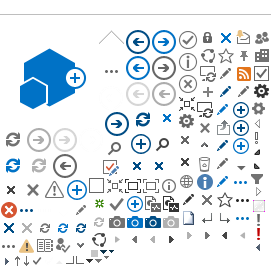Managing Food Safety
Background
The consequences of unsafe food can be serious. The implementation of a food safety management system enables an organization to identify and control food safety hazards. As many of today's food products repeatedly cross national boundaries, International Standards are needed to ensure the safety of the global food supply chain.
Food safety has become a worldwide concern. It is now generally accepted by legislation, enforcement officers and food professionals that a formal, structured food safety management system is the most effective way of managing and controlling food safety hazards in the preparation and handling of food and food related products. In this context the International Organisation for Standardization (ISO) has developed a number of standards. These are referred to as the ISO 22000 family.

|

|
The ISO 22000 family
The ISO 22000 family contains a number of standards, each focusing on different aspects of food safety management. These include:
ISO 22000:2018 sets out the requirements for a food safety management system and can be certified to. It maps out what an organization needs to do to demonstrate its ability to control food safety hazards in order to ensure that food is safe. It can be used by any organization regardless of its size or position in the food chain. The standard ISO 22000:2005 has been updated to ISO 22000:2018 and was published on 18 June 2019.
The main changes
1. Annex SL
ISO 22000:2018 has adopted the 10-clauses, high-level structure created by ISO based on identical core text and common terms and definitions. This change alone will impact the system scope, top management involvement, documentation of the system, application of the risk-based approach to organisational needs, and create a clear focus on the process approach through the Plan-Do-Check-Act (PDCA) cycle.
The changes will facilitate assimilation of the FSMS with other management system disciplines using this structure.
2. Context and scope
ISO 22000:2018 requires organisations to consider upstream and downstream issues affecting customers and consumers as well as suppliers of products and services. This may impact the scope of the food safety system, eg coverage of food fraud, food terrorism and related legal issues. This is likely to have a bearing on the management of food safety risk both for the management system and the product/process operations.
3. Management involvement
The role of top management in the food safety system is emphasised through the responsibility to demonstrate leadership and commitment to food safety, including the setting of appropriate policy and relevant business objectives. Overall responsibility is retained by top management for oversight of system planning, communication, resource provision and ongoing improvement by reviewing the system’s suitability, adequacy and effectiveness.
4. Risk management
Risk management in the FSMS is no longer limited to the use of hazard analysis and critical control point principles at the operational level
The risk-based thinking approach now embodied in management system standards means that risk management in the FSMS is no longer limited to the use of hazard analysis and critical control point (HACCP) principles at the operational level, although this focus is still a key ingredient. There are implications for business planning, management objectives, identifying improvement opportunities and allocating resources to reduce or eliminate unacceptable risk to food safety from a wide range of sources.
5. System support
A number of requirements relating to basic system elements are clarified and strengthened, including communication systems and needs. Resource planning is required along with tighter controls over external contributors to system development. Competence needs of personnel, both internal and external, are more fully explained. A system for greater control of suppliers of goods and services needs to be established.
One of the basic changes to the system is the convergence of ‘procedures’ and ‘records’ into ‘documented information’. This gives the organisation freedom to define the type and extent of documented information to be used, although some mandatory documentation is still specified. The established controls for documents in the system are retained.
6. Operational processes
The application of a PDCA cycle to the operational planning and controls for food safety in the organisation is more clearly established. Based on HACCP principles and the latest versions of the Codex Alimentarius standards, the requirements clarify the role of PRPs, OPRPs and CCPs in the system.
7. Evaluation and improvement
The requirements for evaluation of the performance of the FSMS by monitoring, measurement, auditing and review are retained, with a greater emphasis on the use of a more integrated, systematic approach to performing these activities across the whole system.
8. Implications for stakeholders
External stakeholders in the FSMS include customers, vendors, regulatory authorities, certification organisations, emergency responders and personnel affected by the performance of the organisation relating to food safety.
ISO/TS 22004:2014 – Food Safety Management Systems – Guidance on the application of IS0 22000
The document provides generic guidance that can be applied in the use of ISO 22000
ISO 22005:2007 – Traceability in the feed and food chain
ISO 22005:2007 gives the principles and specifies the basic requirements for the design and implementation of a feed and food traceability system. It can be applied by an organization operating at any step in the feed and food chain.
It is intended to be flexible enough to allow feed organizations and food organizations to achieve identified objectives.
The traceability system is a technical tool to assist an organization to conform with its defined objectives, and is applicable when necessary to determine history or location of a product or its relevant components.
ISO/TS 22002-1:2009 – Prerequisite programmes on food safety
ISO/TS 22002-1:2009 specifies requirements for establishing, implementing and maintaining prerequisites programs (PRP) to assist in controlling food safety hazards.
ISO/TS 22002-1:2009 is applicable to all organizations, regardless of size or complexity, which are involved in the manufacturing step of the food chain and wish to implement PRP in such a way as to address the requirements specified in ISO 22000:2005, Clause 7.
ISO/TS 22002-1:2009 is neither designed nor intended for use in other parts of the food supply chain.
Food manufacturing operations are diverse in nature and not all of the requirements specified in ISO/TS 22002-1:2009 apply to an individual establishment or process.
Where exclusions are made or alternative measures implemented, these need to be justified and documented by a hazard analysis, as described in ISO 22000:2018. Any exclusions or alternative measures adopted should not affect the ability of the organization to comply with these requirements.
ISO/TS 22002-3:2011 – Specific Pre-requisites for farming
ISO/TS 22002-3:2011 specifies requirements and guidelines for the design, implementation, and documentation of prerequisite programmes (PRPs) that maintain a hygienic environment and assist in controlling food safety hazards in the food chain.
Benefits of MS ISO 22000
Greater confidence in the organization's products as regards to food safety.
Enhanced customer satisfaction.
Less customer complaints.
Greater profitability.
Enhanced image of the organisation.
Can be used as a marketing tool
Click here
to view list of ISO 22000 registered firms
